![]()
![]()
![]()
Use LEFT and RIGHT arrow keys to navigate between flashcards;
Use UP and DOWN arrow keys to flip the card;
H to show hint;
A reads text to speech;
23 Cards in this Set
- Front
- Back
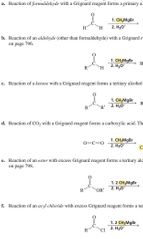
Reactions of carbonyl compounds with Grignard reagents |

|
|
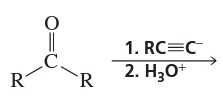
Reaction of carbonyl compounds with acetylide ions |
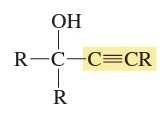
|
|
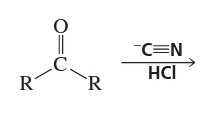
Reaction of an aldehyde or a ketone with cyanide ion under acidic conditions forms a cyanohydrin ( Section 17.6 ). The mechanism is shown on page 802. |
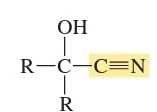
|
|

Reactions of carbonyl compounds with hydride ion donors.
-
Reaction of an aldehyde with sodium borohydride forms a primary alcohol. The mechanism is shown on page 804. |

|
|

Reactions of carbonyl compounds with hydride ion donors. -
Reaction of a ketone with sodium borohydride forms a secondary alcohol. The mechanism is shown on page 804. |

|
|

Reactions of carbonyl compounds with hydride ion donors.
Reaction of an acyl chloride with sodium borohydride forms a primary alcohol. The mechanism is shown on page 804. |

|
|

Reactions of carbonyl compounds with hydride ion donors.
Reaction of an acyl chloride with lithium tri- tert -butoxyaluminum hydride forms an aldehyde. |

|
|

Reactions of carbonyl compounds with hydride ion donors.
Reaction of an ester with lithium aluminum hydride forms two alcohols. The mechanism is shown on page 805. |

|
|

Reactions of carbonyl compounds with hydride ion donors.
Reaction of an ester with diisobutylaluminum hydride (DIBALH) forms an aldehyde. |

|
|

Reactions of carbonyl compounds with hydride ion donors.
Reaction of a carboxylic acid with lithium aluminum hydride forms a primary alcohol. The mechanism is shown on page 806. |

|
|
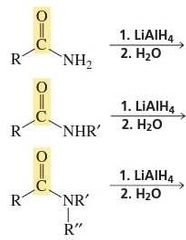
Reactions of carbonyl compounds with hydride ion donors. Reaction of an amide with lithium aluminum hydride forms an amine. The mechanism is shown on page 807. |
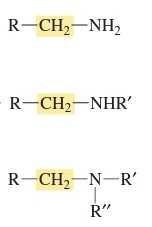
|
|
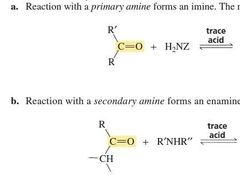
Reactions of aldehydes and ketones with amines and amine derivatives ( Section 17.10) |
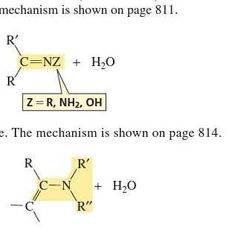
|
|
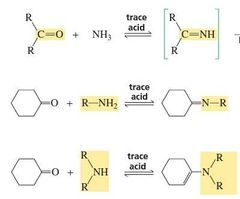
Reductive amination : the imines and enamines formed from the reaction of aldehydes and ketones with ammonia and primary and secondary amines are reduced to primary, secondary, and tertiary amines ( Section 17.10 ). |
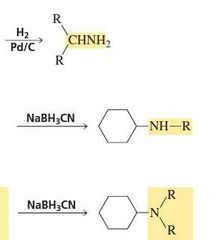
|
|

Reaction of an aldehyde or a ketone with water forms a hydrate ( Section 17.11 ). The mechanism is shown on page 818. |
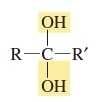
|
|

Reaction of an aldehyde or a ketone with excess alcohol forms first a hemiacetal and then an acetal ( Section 17.12 ). The mechanism is shown on page 820. |
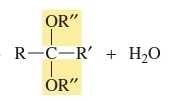
|
|

Protecting groups ( Section 17.13 )
Aldehydes and ketones can be protected by being converted to acetals. |

|
|

Protecting groups (Section 17.13)
The OH group of an alcohol can be protected by being converted to a silyl ether. |

|
|

Protecting groups (Section 17.13)
The OH group of a carboxylic acid can be protected by being converted to an ester. |

|
|

Reaction of an aldehyde or a ketone with a thiol forms a thioacetal, and desulfurization of a thioacetal forms an alkane ( Section 17.14 ). |

|
|
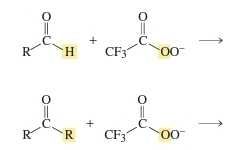
Aldehydes and ketones are oxidized by a peroxyacid (a Baeyer–Villiger oxidation) to carboxylic acids and esters, respectively ( Section 17.15 ). The mechanism is shown on page 826. Relative migration tendencies: H > tertiary > secondary ~ phenyl > primary > methyl |
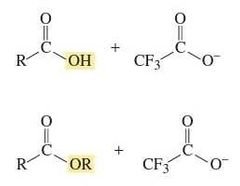
|
|

Reaction of an aldehyde or a ketone with a phosphonium ylide (a Wittig reaction) forms an alkene ( Section 17.16 ). The mechanism is shown on page 827. |

|
|

Reaction of an a, b - unsaturated aldehyde or a ketone with a nucleophile forms a direct addition product and/or a conjugate addition product, depending on the nucleophile (Section 17.18). The mechanism is shown on page 833. |

Nucleophiles that are strong bases (RLi, RMgBr, H −) form direct addition products with reactive carbonyl groups and conjugate addition products with less reactive carbonyl groups. Organocuprates (R 2 CuLi) form conjugate addition products. Nucleophiles that are weak bases (C-‚ N, RSH, RNH2, Br−) form conjugate addition products. |
|
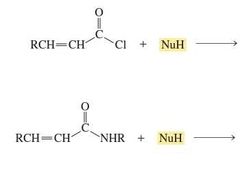
Reaction of an a , b - unsaturated carboxylic acid derivative with a nucleophile forms a nucleophilic addition–elimination product with a reactive carbonyl group and a conjugate addition product with a less reactive carbonyl group ( Section 17.19 ). |
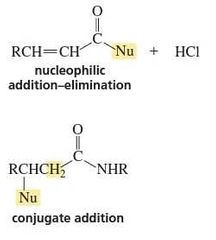
|

